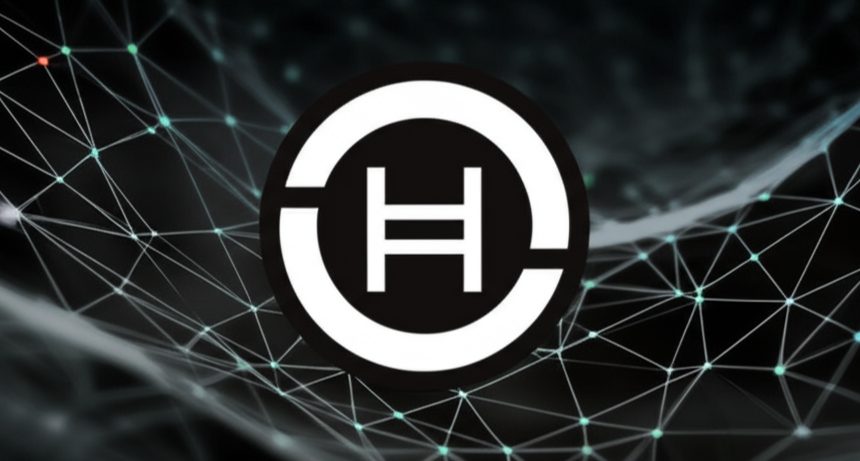
As the demand for speed, energy efficiency, and real-world utility grows, traditional chains like Bitcoin and Ethereum are starting to show their limitations, and the blockchain world is growing. High fees, slow transaction times, and scalability issues remain barriers, especially for businesses that need reliable infrastructure.
Hedera Hashgraph, positioned as a scalable, secure, and sustainable alternative to blockchain, offers a different approach to distributed ledger technology. Its native token, HBAR, plays a central role in powering and securing the network.
In this article, we break down what Hedera is, how HBAR works, and why this project stands out among Layer 1 solutions.
What is Hedera Hashgraph?
Hedera is not a traditional blockchain. Instead of linking blocks in a chain, it uses something called Hashgraph, a consensus mechanism designed to be faster, fairer, and more energy efficient.
At the core of Hedera’s architecture is a model called asynchronous Byzantine Fault Tolerance (aBFT), paired with a “gossip-about-gossip” protocol. This allows nodes to exchange information quickly and reach an agreement without needing intensive computation or mining.
As a result, Hedera offers:
- High throughput
- Fast finality
- Extremely low energy usage
This architecture is built for real-world, high-volume use, which is exactly why enterprises are showing interest.
What is HBAR?
HBAR is the native token of the Hedera network. It serves three primary purposes:
- Transaction fees: HBAR is used to pay for operations like transferring tokens, interacting with smart contracts, or accessing Hedera’s services.
- Network security: HBAR is staked by nodes to maintain consensus and secure the network from attacks.
- Governance: Token holders have a say in network upgrades and decisions through the structure of the Hedera Governing Council.
Quick Facts:
- Symbol: HBAR
- Network: Hedera Hashgraph
- Launched: 2019
How HBAR Works
Transaction Utility
Every transaction on the network requires HBAR. Whether you are deploying a smart contract or transferring an asset, HBAR is the currency that makes it happen.
Staking and Security
HBAR supports network integrity by being staked by nodes. This process helps resist attacks and ensures the network remains trustworthy.
Governance
Hedera’s governance model is unique. It is handled by a rotating council of major global companies. HBAR holders indirectly participate through this model, which is designed to balance decentralization with stability.
Why Hedera and HBAR Matter
Performance
Hedera can process over 10,000 transactions per second. Finality is achieved in a few seconds, which is a major advantage over older networks.
Cost and Predictability
Fees on Hedera are fixed and low. This predictability makes it easier for businesses to plan and scale.
Energy Use
Hedera is built to be energy efficient. It consumes a fraction of the energy per transaction compared to most blockchains. It is marketed as a carbon-negative network.
Security
The ABFT consensus model offers strong security guarantees, even in the presence of malicious actors.
Real-World Use Cases
Enterprise Solutions
Hedera is being used in supply chain management, healthcare data systems, digital identity platforms, and tokenized financial services.
NFTs and Web3
With low fees and fast settlement, Hedera is a practical option for minting and trading NFTs. Web3 developers can build decentralized apps without being held back by cost or speed limits.
Micropayments and IoT
HBAR is also suited for high-frequency, low-value transactions, such as those needed in Internet of Things environments.
Hedera Governing Council
The network is governed by a council of up to 39 organizations. These include some of the most recognizable names in tech and industry Google, IBM, LG, and others.
Their role includes:
- Approving software upgrades
- Overseeing the treasury
- Shaping long-term strategy
This model ensures the network is legally compliant and resistant to manipulation, though it also opens the project to criticism around centralization.
HBAR Tokenomics
Total Supply
The max supply of HBAR is 50 billion tokens. These are being released gradually over time to maintain long-term sustainability.
Distribution
Tokens have been allocated to investors, developers, and the Hedera Treasury. The goal is to fund ecosystem growth and reward participation.
Incentives
HBAR is used for grants, staking rewards, and other programs that encourage adoption and development.
How Hedera Compares
Compared to Ethereum or Solana, Hedera takes a different path. Its Hashgraph consensus is not blockchain-based, which gives it performance advantages but also sets it apart in terms of structure.
- Ethereum: Popular, widely adopted, but still struggles with fees and scalability.
- Solana: Fast and developer-friendly, but has faced downtime and network reliability issues.
- Hedera: Focuses on enterprise stability, energy efficiency, and consistent performance.
Its value proposition is more aligned with regulated environments and large-scale commercial use.
Challenges and Criticism
Centralization
Some argue that Hedera’s governing model limits decentralization. Unlike fully open networks, decisions come from a council rather than token holders directly.
Adoption
Despite strong infrastructure, Hedera still competes with dozens of other Layer 1s. Gaining mindshare in crypto’s retail market is a slow process.
What’s Ahead
Development Plans
Future upgrades will focus on smart contracts, staking enhancements, and developer tools. The goal is to support more complex applications and bring in more builders.
Growth Potential
Hedera’s strength lies in its enterprise relationships. As more businesses adopt digital infrastructure, HBAR could see wider usage in real-world systems, especially in regulated sectors.
HBAR is not trying to be the loudest token in the room. Its strength is in what it builds quietly, a scalable, secure, and efficient infrastructure designed for real use at a global scale.
With its unique technology, strong governance, and focus on enterprise adoption, Hedera has carved out a position that is different from most Layer 1s.
It is not without its challenges. But for those looking beyond hype cycles and into the architecture of long-term platforms, HBAR is worth watching.